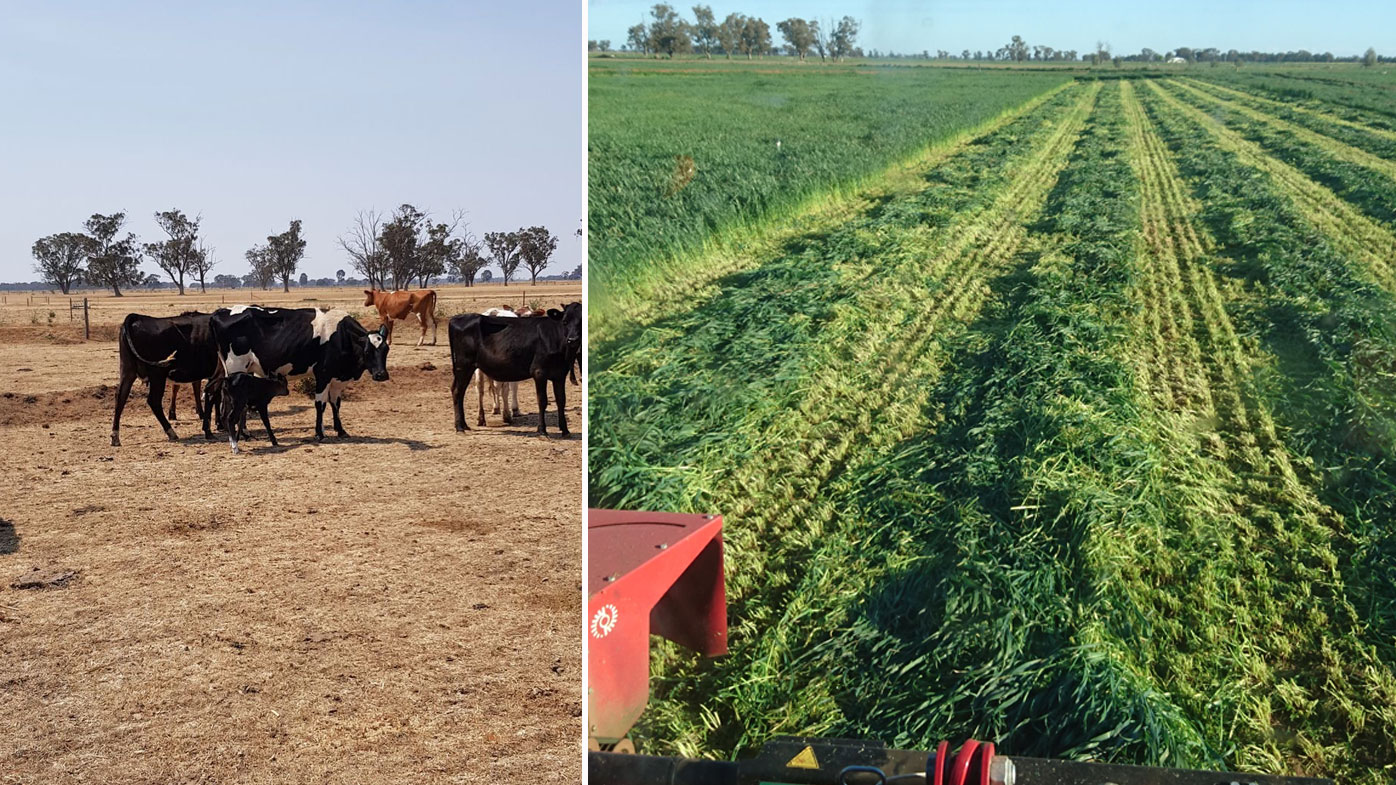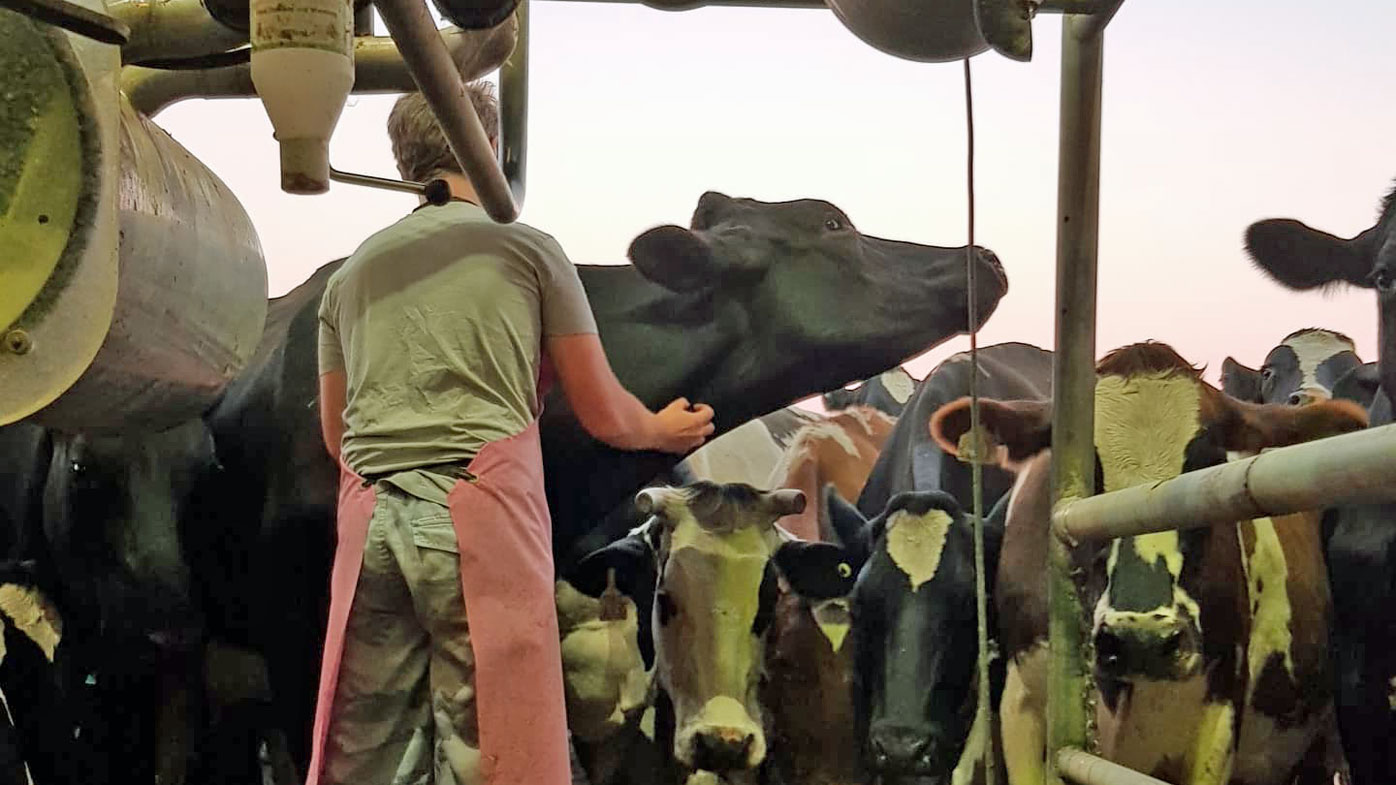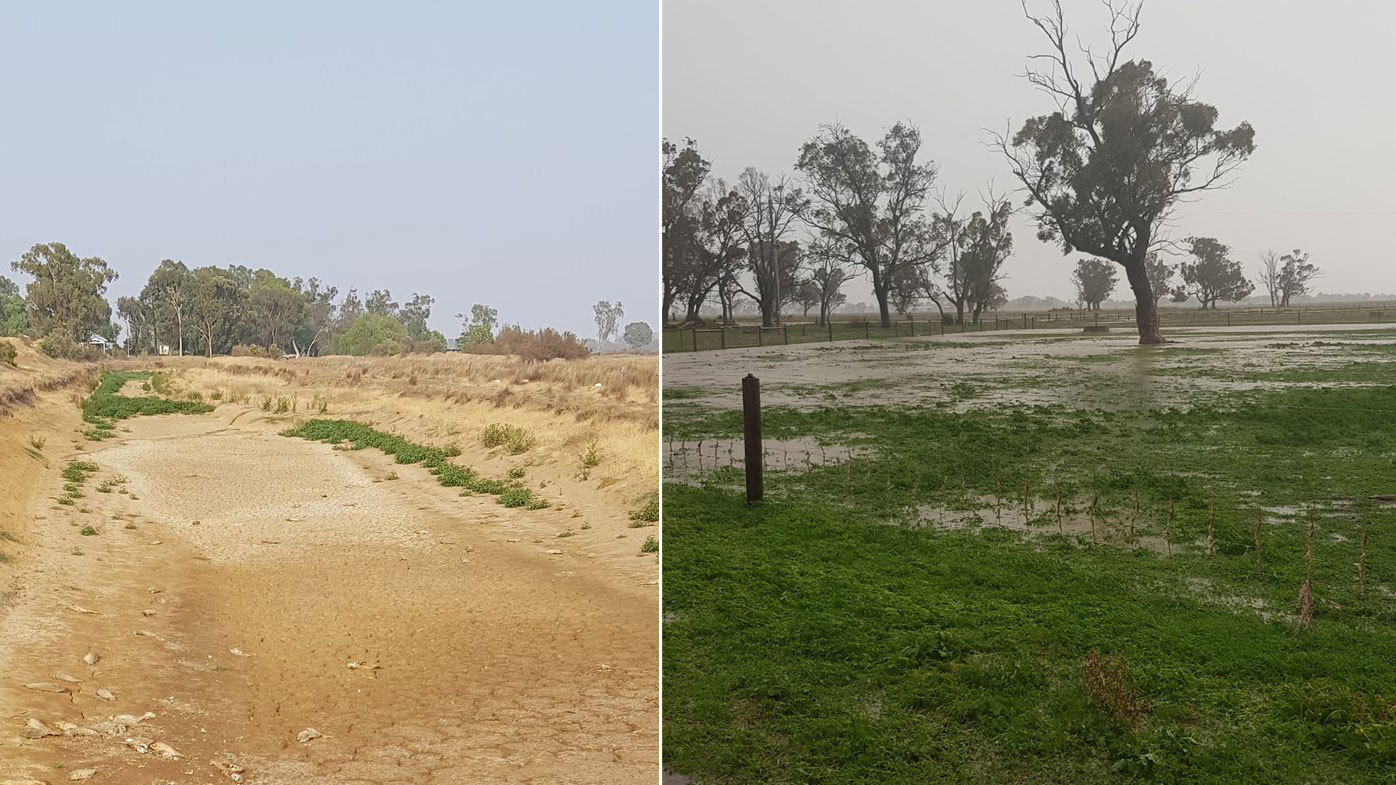When Steve Dalitz woke to his once drought-ravaged paddocks soaked and swelling with teeming rain, it was a sight the Victorian dairy farmer hadn't seen in years.
It was early one morning in April this year and 74mm had fallen in just 24 hours. It was more rain than the region had experienced in all of 2019.
By May, the paddocks would be somewhat restored, with lush boot-high grass offering a bounty to a sorely depleted dairy cow herd.
It was a bittersweet moment for Mr Dalitz and his family, who were forced off the land midway through last year after the crippling drought and political baggage from the dairy industry all but broke them.
READ MORE: Drought in NSW drops by almost 80 per cent as La Nina kicks in

For the family of five, the slow recovery just came too late.
Earlier this month, Mr Dalitz bid farewell to 35 years as a dairy farmer after selling off part of the family's 468-acre farm.
"Selling the farm will get rid of our debt … we'll have a little bit of debt left over," he told nine.com.au before pausing.
"Seems a bit of waste. Basically, we worked 35 years and ended up with a house."
The crushing drought
Selling part of the farm ends a devastating five and a half years for the family where financial strains brought on by milk companies, price wars over $1 milk and government policy over water proved too great.
"Hindsight is a great thing," he said.
"We thought about riding out the drought, but the drought went on for two years instead of one.
"We should have sold the cattle and sold hay.
"But the cows were more than a money source to me.
"Dairy cows are a bit different … you see them twice a day.
"They were my grandfather's herd and we worked them up into a fairly good stud herd."
READ MORE: Farmers forced to abandon bumper crop due to worker shortage

He said for the first year of the drought, the family went into survival mode where they went back to milking the cows once a day.
When he eventually sold his stock, he was again stung by the drought.
Outside of a drought, dairy cows were worth around $2500 each, yet in a drought their worth had plummeted close to $1000.
Even the price of water was proving too steep.
In pre-drought, a megalitre of water sold for $100. During the drought, he said, the price jump to around $800 a megalitre.
But during the drought the cost jumped from $70,000 to $550,000 to water the paddocks.
'I'm not being ungrateful'
The Dalitzes were one the hundreds of Australian farming families who saw firsthand the good farming aid provided for those on the land.
And while he will be forever grateful for the donations and kindness of strangers during the major drought appeals, it simply would never be enough to restore what so many lost.

"At the time most of the drought aid had probably helped mentally more so than financially," he said, referring to the hampers and touching hand drawn messages from the local schools.
"It didn't really help us that much, it did help us mentally. It's a bit the same as those hay runs … we got hay and we got 10 bales which keeps our cows going for two days.
"It was great what people were doing, but it didn't really help … I'm not being ungrateful."
To illustrate his point, he said a farmer he worked with this year was unable to afford his medication or petrol to get to work.
He was eating Weet-Bix for his three meals just to get by.
In Mr Dalitz's view, the government aid "was aimed wrong" with millions of dollars wasted.
He said instead of financial counselling more pressure should have been put on Coles selling milk for $1 per litre.
"That was the milk price in 1984 … but the Coles executives aren't on 1984 wages," he said.
As the hard months continued, he took on other work at nearby farms to help supplement his income.
He spent the last 12 months travelling around Gippsland and the Western District farm-sitting to give respite to other dairy farmers.

The 12-month stint back
He documented his travels through his Facebook page, sharing the daily experiences of his new normal working on the land.
"My legs are sore, my back aches as it's a long time since I have milked 270 cows for six milkings in a row. But there (sic) good aches," he wrote in July last year.
As a comparison, during the drought before he started the farm sitting he was milking less than 60 cows once a day for months.
"I really enjoyed it, but I was always wanting to come home all the time. Being a dairy family, you are used to be around each other," he said.
When the coronavirus pandemic hit Australia in March, Mr Dalitz's jobs dried up.
Harsh lockdowns in Victoria meant no more holidays.
He picked up more work nearby but as the health crisis worsened that job also ended.
During his 12-month stint, he worked more on than 20 farms.

These days, the family remain in their house on a subdivided block of their land with the change in weather also changing their fortunes.
Mr Dalitz is now making a solid living selling hay and is back studying to be a counsellor.
"If we had this 12 months earlier we would have survived," he said.
"Sometimes you look back and I might have done the same thing and worked for someone else.
"That's what I'm enjoying now, I'm doing what I love doing but I haven't got the financial stresses.
"This year we've had an absolutely brilliant system … financially we're really good. It's the best it's been for 10 years."
Contact reporter Kate Kachor at kkachor@nine.com.au
from 9News https://ift.tt/2Lbu7WF
via IFTTT


0 Comments